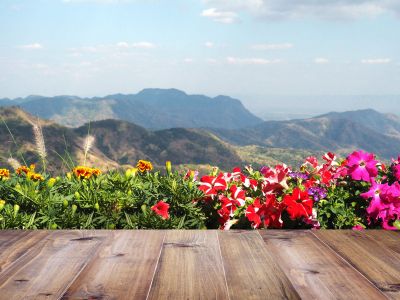Challenges of High-Altitude Gardening
Perhaps you have recently moved to an area with high altitude and want to get going on your landscaping. What grows at high altitudes? The mountain garden should feature native plants that are already adapted to the conditions. When installing non-native plants, pay special attention to the plant label, noting the hardiness zone and the plant’s requirements. High elevations are often harsh and exposed to rough weather. The soil is usually low in nutrients and may be porous and hold little water. There are also often microclimates which can be quite different from the overall growing situation. Slopes are hard to keep watered, erosion may occur, and the growing season is not very long. Each of these challenges can be conquered by careful planning, site and plant selection, and winter protection for those plants. Gardening at high altitudes doesn’t have to be frustrating, but it does take careful management.
Building the High Elevation Garden
An important aspect of high-altitude gardening is choosing appropriate sites for plants. In order to give them some protection, situate them where there is shelter from wind, pelting rains, and freezing snow. The southern or western side of the home will receive more sun and stay warmer. Planting against a fence, garage, or other structure can minimize wind damage. Find any microclimates in your landscape where there is a natural dip, tree shadow, or full sun location. On hilly sites, consider building a rock garden or terracing to keep soil stable and provide some way for water to pocket. The mountain garden can be a tough site but with some planning, it will become quite manageable.
High Altitude Plants
Choosing the right plants is the most important part of gardening at high altitudes. Contact your local extension office for a list of native plants that can be used in the landscape. Use tough perennials and evergreen plants that are hardy to your zone. If you think a vegetable garden is out of the question, think again. Short-season veggies will still thrive in the garden provided you incorporate plenty of compost or manure into your soil. Try leafy greens, root vegetables, cole crops, peas, and many varieties of herbs. Add some color with pasque flower, jupiter’s beard, blue woolly speedwell, blanket flower, and yarrow. Most wildflower collections are hardy in the area in which they are sold and would make a carpet of jewel tones to brighten up larger areas of the garden. Use floating covers as needed to protect plants from late frosts and extend the growing season.
